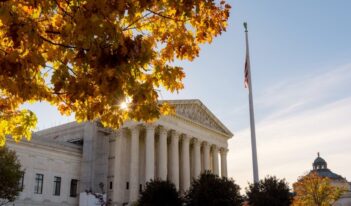
“Do-over” of Obama-era rule shines a spotlight on alternative to notice-and-comment rulemaking.
A proposed rule that the U.S. Department of Education issued last week marks just the next chapter of an ongoing saga to create workable rules keeping colleges accountable for the employment promises they made to students. It also reveals another limitation to a little-used process for making government regulations by engaging in formal negotiations with those entities that will be affected by the rules.
Ever since government investigations led to the dissolution of for-profit institutions like Corinthian Colleges, thousands of college students have been awaiting relief from their student loans. During the final days of the Obama Administration, the Education Department used a negotiated rulemaking process to create a final rule, known as the “borrower defense to repayment” regulation, that would provide loan forgiveness to students defrauded by such institutions. Under the Trump Administration, however, the Department initiated a “do-over” of the Obama-era rule, failed to reach any consensus on changes through negotiation with affected interests, and ultimately resorted last week to issuing its own proposed rule.
The rulemaking process for creating and then revising student loan rules is somewhat distinctive because Congress has required the Department to engage in a formal negotiation process. In the negotiated rulemaking process, an agency forms a committee of relevant but diverse industry and public interest group representatives to see if they can forge a consensus on what a proposed rule should look like. If consensus is reached, the agency issues a proposed rule and solicits public comment, following the standard notice-and-comment rulemaking procedure specified in the Administrative Procedure Act (APA).
According to Florida State University College of Law professor Hannah Wiseman, negotiated rulemaking can be beneficial because it brings stakeholders together early on in the rulemaking process. Unlike notice-and-comment rulemaking, which at best resembles a limited paper hearing, negotiated rulemaking allows face-to-face interactions between stakeholders and the agency, Wiseman argues. Proponents of negotiated rulemaking argue that increased participation infuses rulemaking with more expertise and consensus, which reduces agency time spent in notice-and-comment rulemaking and decreases the risk of post-rulemaking litigation.
The Education Department may have realized these benefits when it issued its first iteration of the borrower defense rule during the Obama Administration. At that time, the Department issued its final rule less than six months from its initial notice of negotiated rulemaking. By comparison, a government study found that, for many agencies, standard notice-and-comment rulemaking often takes several years.
Furthermore, the over ten thousand public comments submitted during the notice-and-comment period following the negotiation process echoed concerns that committee members had previously discussed in their negotiations. Having anticipated these issues, the Education Department made only two significant changes to the proposed rule.
Other scholars contest the benefits of negotiated rulemaking. University of Pennsylvania Law School professor Cary Coglianese found that out of twelve rules issued by the U.S. Environmental Protection Agency using negotiated rulemaking, six resulted in litigation—a rate of legal challenge higher than that of final rules resulting from the standard rulemaking process. Furthermore, Coglianese has contended that negotiated rulemaking consumes more agency resources and fails to reduce the duration of the entire rulemaking process. In fact, another empirical study demonstrates that rules from negotiated rulemaking take longer on average to develop than do rules crafted through the standard process.
Detractors of negotiated rulemaking have questioned the purported benefits of increased participation. After all, if the structured, notice-and-comment rulemaking process has been designed in part to prevent undue regulatory influence by special interests, then affirmatively inviting industry participation earlier on in the process could also increase the prospects for such regulatory capture, a point Wiseman acknowledges.
The aftermath of the Obama Administration’s final rule may lend credence to criticisms of negotiated rulemaking. Soon after the Obama Administration issued the borrower defense rule, a group of private postsecondary schools in California sued the Education Department, alleging that the rule was unconstitutional and violated the APA.
The Trump Administration’s attempt to revise or replace rule has fared no better. Massachusetts Attorney General Maura Healey (D) has lambasted the Trump Administration for siding with education executives and lobbyists by announcing a regulatory do-over. It is hard to see how negotiated rulemaking would not heighten concern about improper influence by those executives and lobbyists over administrative decisions.
Ultimately, the Trump Administration’s failure to reach consensus on a revised rule through the negotiated rulemaking process only seems to confirm Coglianese’s view that formal negotiation can consume costly resources, leaving the public—especially defrauded students—to bear the costs of waiting for relief.
The Education Department’s experience using negotiated rulemaking in two administrations to address the plight of student borrowers offers no clear resolution to the longstanding debate over the benefits and costs of negotiated rulemaking. But the borrower defense rulemaking process does at least demonstrate another possible lesson about rules created through negotiated rulemaking: Even if the negotiation process worked once to create a rule, it is not guaranteed to work again to revise that rule.
This essay is one of two student-written pieces selected as the top essays from Professor Sophia Lee’s spring 2018 administrative law course at University of Pennsylvania Law School. Students in the class each researched a recent U.S. regulation and submitted their analysis for consideration in The Regulatory Review’s annual essay competition.
Both winning essays this year examined the Department of Education’s “borrower defense to repayment” rule.



